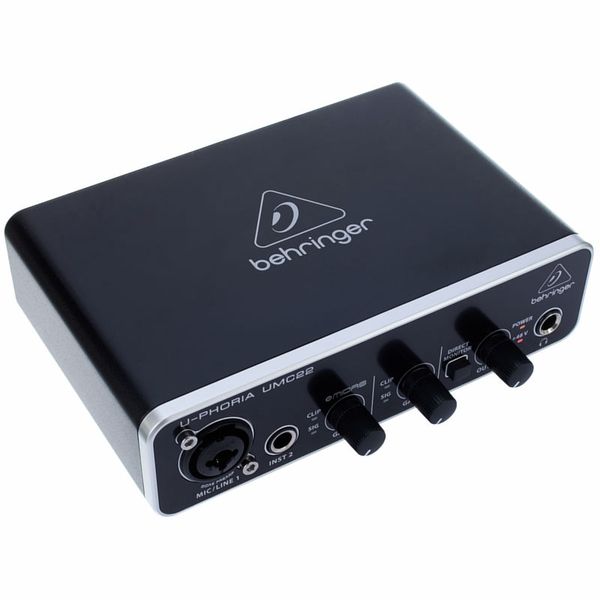I would like to preface this by the fact that I am by no means someone well educated in the field of audio. I bought this to go with a cheap microphone setup from Amazon, just so I could talk to my friends with something of a nicer setup.
So, after getting the product and setting it up on my desk, finding the right drivers when getting it to work with my PC was a little difficult initially, but after following a few links and finally getting it downloaded, it worked there and then. So, a plus to getting it to a state of 'just about working'. I've heard from other places that it isn't exactly this simple when trying to use it for something more than just a microphone input, but that doesn't quite affect me. Setup outside of the drivers is as simple as adjusting audio levels in Windows.
For audio input, it works just fine with my current microphone, a cheap Neewer NW-800 that I got from Amazon. Setting everything to max in Windows and then using the adjustments on the interface itself felt right to do, and the little indicators were perfect for telling me if I had set the gain a little too high or not. Though, the Signal LED doesn't appear to be too sensitive, as in, even if a program I am using (Discord/Teams/Zoom) is detecting input, the signal indicator is usually off. I don't necessarily speak so loud, and it only comes on when I start to raise my voice.
In terms of using it as audio output for my headphones, the built in DAC/amp works wonderfully, and is a tonne better than the output on my laptop of course. I can't say too much about it as I have not got much to compare to, but it provides a wide range of listening volumes (I usually have it set at 11 or 12 o'clock with my AKG K612 Pros, with all volumes in Windows set to max) and the direct monitoring feature is wonderful to help me realise if I'm talking just a little bit too loud. I don't particularly like how it quietens down the output signal a little bit, but that's just nitpicking.
The build quality of the unit is perfectly acceptable. Looking from the front, the slightly glossy front facade isn't distracting with reflections as the gloss isn't overly done, and each knob feels nice and buttery smooth to turn. Though, the small size of the knobs isn't that satisfying personally, but that's not exactly a problem, is it? The unit sits just a little higher than the surface on some small, rubber feet which do a good job of protecting the surface from scratching from the case of the unit. Speaking of which, the metal case feels of high quality, and does not feature any sharp edges. My biggest complaint about the unit would be that the phantom power switch is on the back (I like having all of the controls and switches on the front, for ease of access), but as the average person wouldn't be fiddling with that switch too often if at all, it isn't too big of a problem.
Overall I find the unit to be really quite good, especially for the price you can get it at! The build quality is great, and the provided features are very nice.





















)
)
)
)